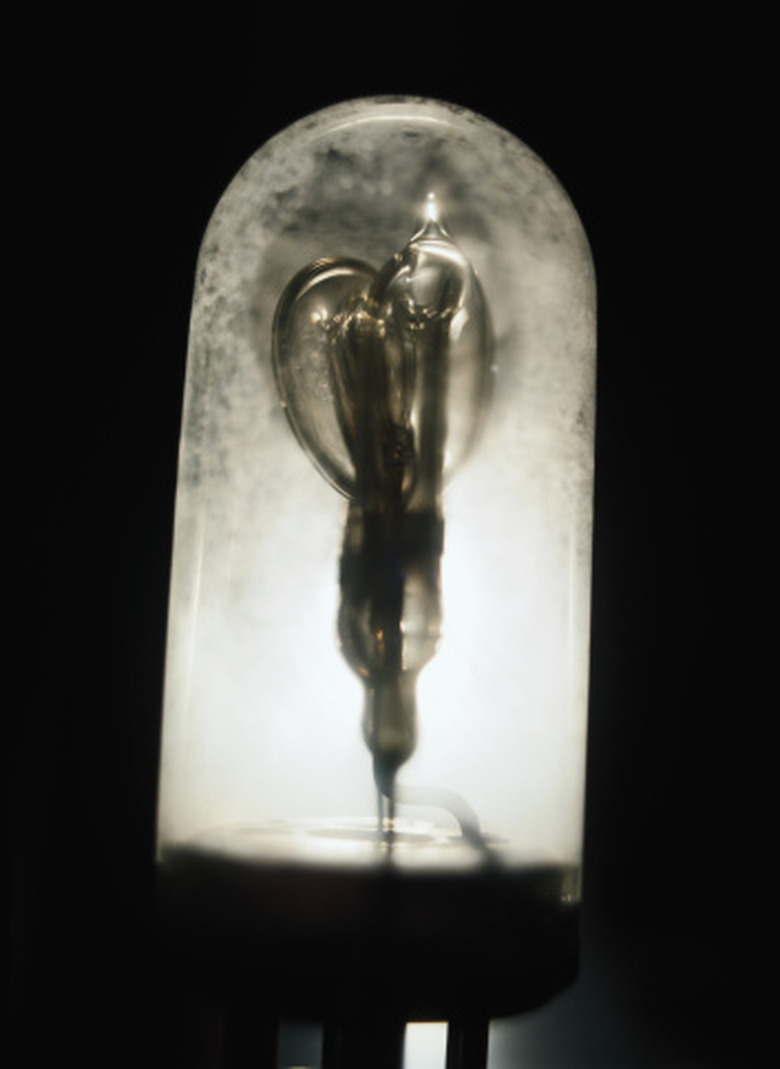How To Find The Maximum Kinetic Energy Of A Photoelectron
Theoretical Physicist Albert Einstein was awarded his Nobel Prize for unraveling the mystery of the kinetic energy of photoelectrons. His explanation turned physics upside down. He found that the energy carried by light was not dependent upon its intensity or brightness–at least not in the way that physicists at the time understood. The equation he created is a simple one. You can duplicate Einstein's work in just a few steps.
Step 1
Determine the wavelength of the incident light. Photoelectrons are ejected from a material when light is incident on the surface. Different wavelengths will result in different maximum kinetic energy.
For example, you could pick a wavelength of 415 nanometers (a nanometer is one billionth of a meter).
Step 2
Calculate the frequency of the light. The frequency of a wave is equal to its speed divided by its wavelength. For light, the speed is 300 million meters per second, or 3 x 10^8 meters per second.
For the example problem, the speed divided by the wavelength is 3 x 10^8 / 415 x 10^-9 = 7.23 x 10^14 Hertz.
Step 3
Calculate the energy of the light. Einstein's big breakthrough was determining that light came in tiny little energy packets; the energy of those packets was proportional to the frequency. The constant of proportionality is a number called Planck's Constant, which is 4.136 x 10^-15 eV-seconds. So the energy of a light packet is equal to Planck's Constant x the frequency.
The energy of the light quanta for the example problem is (4.136 x 10^-15) x (7.23 x 10^14) = 2.99 eV.
Step 4
Look up the work function of the material. The work function is the amount of energy required to pry an electron loose from the surface of a material.
For the example, select sodium, which has a work function of 2.75 eV.
Step 5
Calculate the excess energy carried by the light. This value is the maximum possible kinetic energy of the photoelectron. The equation, which Einstein determined, says (electron's maximum kinetic energy) = (energy of the incident light energy packet) minus (the work function).
For the example, the electron's maximum kinetic energy is: 2.99 eV – 2.75 eV = 0.24 eV.
TL;DR (Too Long; Didn't Read)
The work function for most materials is large enough that the light required to generate photoelectrons is in the ultraviolet region of the electromagnetic spectrum.
Cite This Article
MLA
Gaughan, Richard. "How To Find The Maximum Kinetic Energy Of A Photoelectron" sciencing.com, https://www.sciencing.com/maximum-kinetic-energy-photoelectron-8522728/. 24 April 2017.
APA
Gaughan, Richard. (2017, April 24). How To Find The Maximum Kinetic Energy Of A Photoelectron. sciencing.com. Retrieved from https://www.sciencing.com/maximum-kinetic-energy-photoelectron-8522728/
Chicago
Gaughan, Richard. How To Find The Maximum Kinetic Energy Of A Photoelectron last modified August 30, 2022. https://www.sciencing.com/maximum-kinetic-energy-photoelectron-8522728/

